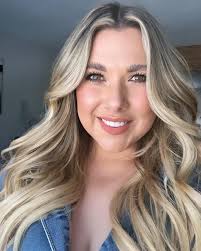Why Hair Biology is Your Secret Weapon for Flawless Extensions
Last year, Elowen Marsh came into my studio at Christian Michael Hair Extension excited about getting extensions. She'd been researching for months, picked out her dream length, and was ready to book immediately.
"I want long, thick hair for my wedding in three months," she said, pulling up inspiration photos. "Can we do tape-ins?"
I examined her hair closely. Beautiful natural blonde, but severely compromised from years of highlights. The moment I touched it, I knew we had a problem.
"Tell me about your color history," I said.
"I've been highlighting for about five years," she explained. "Every eight weeks. I love being blonde, but my hair has gotten thinner and more brittle lately."
I performed a simple elasticity test, gently stretching a shed strand between my fingers. It snapped immediately with almost no stretch.
"Elowen, I need to be honest with you," I said. "Your hair isn't ready for extensions yet."
Her face fell. "What do you mean? I have the wedding in three months."
This is where understanding hair biology becomes your secret weapon. Not just for successful applications, but for knowing when to say no.
The Honest Conversation Nobody Wants to Have
I explained what I was seeing.
"Your hair has very poor elasticity," I said. "See how that strand snapped with no stretch? Healthy hair should stretch about a third of its length and bounce back. Yours is brittle from the chemical processing."
I showed her under magnification. Her cuticle layer was severely lifted and damaged, with visible gaps along the hair shaft.
"This is high porosity," I explained. "Your cuticle is so compromised that it can't retain moisture or protect the inner structure. If I put extensions on this hair right now, the weight and tension would cause massive breakage."
Elowen looked devastated. "So I can't have extensions for my wedding?"
"Not yet," I said. "But we can get your hair ready. Three months is actually perfect timing. We'll do an intensive treatment plan to restore your hair's strength and integrity. Then we can safely apply extensions that will look beautiful and last."
She was quiet for a moment. "Other stylists didn't say anything about this. They were ready to book me right away."
"Because they're looking at your hair," I said. "I'm looking at your hair's biology. The structure, the strength, the ability to support added weight. That's the difference between extensions that damage your hair and extensions that transform it safely."
She took a deep breath. "Okay. What's the treatment plan?"
Twelve Weeks of Rebuilding What Bleach Destroyed
I created a protocol focused on repairing Elowen's compromised cuticle and strengthening her cortex. Deep conditioning treatments, bond-building products, and a break from heat styling.
At her four-week check-in, I performed the elasticity test again. Better, but not quite there yet.
"Your hair is responding," I said. "See? This strand stretches a bit more before breaking. We're rebuilding the internal structure."
At eight weeks, the improvement was more dramatic. Her hair had visible shine, the cuticle lying flatter and more intact.
"How does it feel?" I asked.
"Stronger," she said. "Less brittle. My regular stylist back home commented on how much healthier it looks."
At twelve weeks, two weeks before her wedding, I performed a final assessment. The elasticity test showed healthy stretch and bounce-back. The porosity had improved significantly, the cuticle more intact.
"Your hair is ready," I said. "We can safely apply extensions now."
Installing What She Almost Destroyed
At Elowen's installation appointment, I used hand-tied wefts instead of tape-ins. Her hair was healthier, but I wanted a method that distributed weight more evenly to protect her recovering structure.
As I worked, she watched in the mirror.
"I'm so glad you made me wait," she said. "If we'd done this three months ago when my hair was breaking, what would have happened?"
"The extensions would have accelerated the damage," I explained. "The weight and tension on already-compromised hair causes breakage at the attachment points. You would have ended up with thin, damaged hair and extensions that didn't look good."
When I finished, Elowen's transformation was stunning. Long, thick, beautiful hair that moved naturally and looked completely healthy.
"This is what I wanted," she said, touching her hair. "But if we'd done it when I first came in, I would have destroyed my hair to get it."
The Wedding Photos That Proved Everything
At Elowen's first move-up appointment after her wedding, she showed me photos.
"Look at these," she said. "My hair looked perfect all day. And it's still healthy underneath. No breakage, no damage."
I examined her natural hair at the attachment points. Strong, intact, no signs of stress or compromise.
"This is what proper assessment does," I said. "We waited until your hair could safely support the extensions. Now you get to enjoy them without destroying your natural hair."
She looked at her reflection. "I almost went to that other stylist who would have installed them immediately. I would have had extensions for my wedding, but I would have ruined my hair to get them. You saved me from that."
Why Everything Kept Slipping Out
Last spring, Thessaly Nguyen came in frustrated. She'd had tape-in extensions installed elsewhere two months prior, and they'd all slipped out within six weeks.
"I spent so much money," she said. "And they just fell out. The stylist said it was my fault, that my hair was too oily or I wasn't taking care of them right."
I examined her hair. Fine texture, but healthy. I performed a strand test, sliding my fingers from tip to root.
Completely smooth. Almost slippery.
"Your hair isn't oily," I said. "It's low porosity. Feel how smooth this is? Your cuticle is tightly sealed, which is actually great for hair health. But it makes tape adhesion challenging."
Thessaly looked confused. "So what does that mean?"
"It means tape-ins weren't the right method for your hair biology," I explained. "The adhesive couldn't get a strong grip on your smooth, sealed cuticle. That's why they slipped. It wasn't your fault. It was improper method selection."
Finding the Method Her Hair Could Actually Hold
I explained Thessaly's options.
"For low-porosity hair like yours, we need a method that doesn't rely on adhesive sticking to the hair shaft," I said. "Hand-tied wefts or beaded methods work beautifully because they're secured mechanically, not adhesively."
I showed her examples on similar hair types.
"See how these are sewn onto a beaded foundation?" I pointed out. "The security comes from the sewing and the beads, not from adhesive trying to grip your slippery cuticle. These won't slip."
Thessaly studied the photos. "Why didn't my last stylist know this?"
"Because they looked at your hair but didn't assess your hair's structure," I said. "They saw fine hair and assumed tape-ins would work. They didn't test porosity or consider how your cuticle condition would affect adhesion."
She looked relieved. "So I can have extensions. Just not the same method."
"Exactly," I said. "When we match the method to your hair's biology, everything works."
Eight Weeks Without a Single Slip
At Thessaly's installation, I used hand-tied wefts secured to a beaded foundation. As I worked, I explained the difference.
"Feel how secure these are?" I said. "They're not relying on adhesive to grip your smooth cuticle. They're mechanically attached."
When I finished, Thessaly looked at her reflection. Long, full, natural-looking hair.
"These feel so much more secure than the tape-ins," she said. "I can actually feel that they're attached."
At her eight-week move-up appointment, every single weft was still perfectly in place.
"Not one slipped," she said, amazed. "With the tape-ins, I started losing them after three weeks. These haven't budged."
I examined the wefts. Completely secure, no slippage, no damage to her natural hair.
"This is what happens when we match method to biology," I explained. "Your low-porosity hair couldn't hold tape adhesive. But it's perfect for sewn wefts. Same hair, different method, completely different result."
Four Months of What Extensions Should Be
At Thessaly's four-month check-in, she came in excited.
"I tell everyone now to make sure their stylist actually assesses their hair," she said. "Not just looks at it, but tests porosity and elasticity and matches the method to their specific hair biology."
She showed me photos comparing her failed tape-ins to her successful hand-tied wefts.
"Same person, same hair, four months apart," she said. "The only difference is you understood my hair's structure and chose the right method. That other stylist just did what they always do without considering my specific biology."
I examined her wefts. Still secure, her natural hair healthy and strong underneath.
"Your hair is thriving," I said. "Because we're working with its natural characteristics instead of fighting against them."
What Proper Assessment Actually Prevents
Elowen's journey shows assessment prevents damage: excited for extensions three months before wedding, elasticity test revealed brittle compromised hair, twelve-week treatment plan rebuilt strength, safe installation on recovered hair, wedding photos showing no breakage or damage.
Thessaly's transformation shows biology determines method: tape-ins failed and slipped after six weeks elsewhere, assessment discovered low-porosity smooth cuticle, hand-tied wefts matched to her biology, eight weeks with zero slippage, four months of perfect secure hold.
Both learned you can't just look at hair. You must assess structure, test elasticity and porosity, match method to biology. Understanding cuticle condition, cortex strength, and hair characteristics is the difference between damage and transformation.
Ready for Proper Assessment?
Beautiful extensions start with understanding your hair's biology. Structure, strength, porosity all determine which method will work safely and successfully.
Visit us at 16792 14th St, Huntington Beach, California 92649, United States or book an appointment online to get started.
Your hair's structure tells the story. We just need to read it.

Tiffany Loe
Owner & Master Stylist
Hair extension expert and salon owner with a passion for helping stylists succeed. Tiffany has been transforming hair and building confidence for over 15 years.




